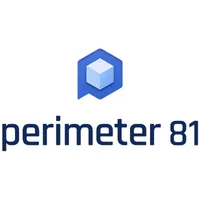When establishing a zero trust approach, don't forget to monitor VPN activity levels
Zero trust mandates that users are only provided with the bare minimum level of access

As more companies embrace remote work, the zero trust approach is increasingly becoming mainstream. Created just over a decade ago by cybersecurity strategist John Kindervag, the zero trust framework mandates that users are only provided with the bare minimum level of access needed to complete their work.
This includes everyone in an organization, even those within the upper echelon of management. Despite their spots at the top of the org chart, C-suite executives need to be beholden to privileged access management. After all, their accounts are the most desirable targets for hackers, malicious insiders, and other bad actors.
Perimeter 81 is a Forrester New Wave™ ZTNA Leader
Ditch your legacy VPN hardware and automate your network security with ZTNA. Secure remote access from anywhere with just a few clicks. Onboard your entire organization in minutes, not days. Learn why Perimeter 81 is one of TechRadar's choices for the best ZTNA security providers. Download the report.
- Here's our list of the best business VPN services right now
- Check out our list of the best Windows 10 VPN apps out there
- We've built a list of the best Mac VPN services available
Rajesh Ganesan is Vice President at ManageEngine
Always use the principle of least privilege and just-in-time elevation
By incorporating the principle of least privilege (PoLP), corporations can reduce their attack surface, protect sensitive corporate data, and prevent users from doing malicious or unintentional damage to applications and systems. Another important component of the zero trust framework is just-in-time privilege elevation (JIT). As its name connotes, JIT is the idea that users should only be granted elevated access to a given application or system when they need it; moreover, this access should be limited to a specific time frame, and users' privileges should be revoked as soon as possible.
VPN monitoring is key
Given that so many of us are working via remote access VPNs these days, it's vital that we engage in frequent and robust VPN monitoring. VPNs—virtual private networks that create a connection between remote users and private networks—are secured through encryption, and these networks allow data to flow through protected paths, known as VPN tunnels. In order to identify bandwidth constraints and security threats, it is important for IT personnel to engage in not only VPN traffic monitoring, but also VPN tunnel monitoring. Additionally, all user activity should be tracked, including—and perhaps, especially—the activity of C-suite users.
Focus on VPN bandwidth management, traffic monitoring, and capacity planning
With so many users accessing the network via remote access VPN, be sure to maintain the integrity of the VPN connections by tracking bandwidth usage levels. In addition to identifying high bandwidth consumption, be sure to track destination URLs, and block unwanted traffic. Moreover, it is important to monitor VPN traffic in real time, noting the number of active VPN sessions and the length of these sessions. After your organization has analyzed bandwidth trends, it's time to engage in capacity planning. This is done by establishing metrics, configuring thresholds, planning future bandwidth capacity needs, and setting up alerts.
Watch out for failed user login attempts and anomalous behavior
If your organization's VPN monitoring tool offers dashboards with user activity, be sure to share this information with the C-suite users, especially if they are responsible for failed logins. Unfortunately, some C-level employees expect to have privileged access to applications and systems at all times. If there is a record of failed logins or other anomalous activity coming from their accounts, these data points can convince him or her that no employee should be given special privileges. Besides tracking all employees, it's important to set up alerts. In the event of a failed user login attempt, security attack, virus, or some form of anomalous user behavior, these alerts should be created to ping IT personnel. Lastly, be sure to track the health of all VPN links, as well as all data transmissions across VPN tunnels.
Be sure to incorporate privileged session monitoring and privileged user behavior analytics
Through the course of your VPN monitoring, be sure to monitor all privileged sessions. With a good VPN monitoring solution, it's easy to fetch VPN logs from a firewall, and then generate traffic and security reports for C-level executives. With privileged user behavior analytics, you can make context-aware correlations, as you merge the privileged access data with your endpoint event logs; these types of correlations can be rather eye-opening. Again, sometimes, such data can also help rectify a C-level employee's misplaced notion that he or she deserves access to everything at all times.
As we continue to embrace hybrid work environments, it is important to not only engage in privileged access management best practices, such as the principle of least privilege and just-in-time privilege elevation. Since we're relying heavily on remote access VPNs, the importance of VPN monitoring cannot be understated. After all, privilege misuse is a top cyber threat. In fact, it is a rather popular favorite attack vector, as it can provide a bad actor with access to an enterprise's underbelly without raising alarms; that is, if your organization is not adequately engaged in VPN monitoring. By monitoring VPN activity levels for all employees—especially privileged users—you can be sure to keep your network safe.
- We've built a list of the best proxy services
Sign up to the TechRadar Pro newsletter to get all the top news, opinion, features and guidance your business needs to succeed!
Rajesh Ganesan is Vice President at ManageEngine, the IT management division of Zoho Corporation. Rajesh has been with Zoho Corp. for over 20 years developing software products in various verticals including telecommunications, network management, and IT security. He has built many successful products at ManageEngine, currently focusing on delivering enterprise IT management solutions as SaaS.
